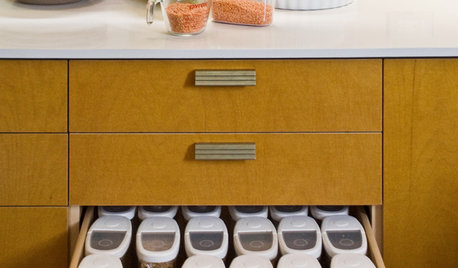Has anyone tried this?
mrs.b_in_wy
14 years ago
Related Stories

CLOSETSThe Cure for Houzz Envy: Closet Touches Anyone Can Do
These easy and inexpensive moves for more space and better organization are right in fashion
Full Story
KITCHEN DESIGNThe Cure for Houzz Envy: Kitchen Touches Anyone Can Do
Take your kitchen up a notch even if it will never reach top-of-the-line, with these cheap and easy decorating ideas
Full Story
KITCHEN DESIGN6 Clever Kitchen Storage Ideas Anyone Can Use
No pantry, small kitchen, cabinet shortage ... whatever your storage or organizing dilemma, one of these ideas can help
Full Story
MUDROOMSThe Cure for Houzz Envy: Mudroom Touches Anyone Can Do
Make a utilitarian mudroom snazzier and better organized with these cheap and easy ideas
Full Story
DECORATING GUIDESThe Cure for Houzz Envy: Guest Room Touches Anyone Can Do
Make overnight guests feel comfy and cozy with small, inexpensive niceties
Full Story
LAUNDRY ROOMSThe Cure for Houzz Envy: Laundry Room Touches Anyone Can Do
Make fluffing and folding more enjoyable by borrowing these ideas from beautifully designed laundry rooms
Full Story
BUDGET DECORATINGThe Cure for Houzz Envy: Living Room Touches Anyone Can Do
Spiff up your living room with very little effort or expense, using ideas borrowed from covetable ones
Full Story
BEDROOMSThe Cure for Houzz Envy: Master Bedroom Touches Anyone Can Do
Make your bedroom a serene dream with easy moves that won’t give your bank account nightmares
Full Story
COMMUNITYCommunity Building Just About Anyone Can Do
Strengthen neighborhoods and pride of place by setting up more public spaces — even small, temporary ones can make a big difference
Full Story
DECORATING GUIDESThe Cure for Houzz Envy: Dining Room Touches Anyone Can Do
Get a decorator-style dining room on the cheap with inexpensive artwork, secondhand furniture and thoughtful accessories
Full StorySponsored






jimster
agrigirl
Related Professionals
Citrus Heights Landscape Architects & Landscape Designers · Deer Park Landscape Architects & Landscape Designers · Barrington Landscape Contractors · Deerfield Beach Landscape Contractors · East Lake-Orient Park Landscape Contractors · Petaluma Landscape Contractors · Point Pleasant Landscape Contractors · Rockwall Landscape Contractors · Sugar Hill Landscape Contractors · Tinton Falls Landscape Contractors · York Decks, Patios & Outdoor Enclosures · Clute Decks, Patios & Outdoor Enclosures · Franconia Decks, Patios & Outdoor Enclosures · Liberty Decks, Patios & Outdoor Enclosures · West Bend Decks, Patios & Outdoor Enclosuresagrigirl
mrs.b_in_wyOriginal Author
agrigirl
mrs.b_in_wyOriginal Author
anney
agrigirl
anney
adws_thereal
agrigirl
mrs.b_in_wyOriginal Author
agrigirl